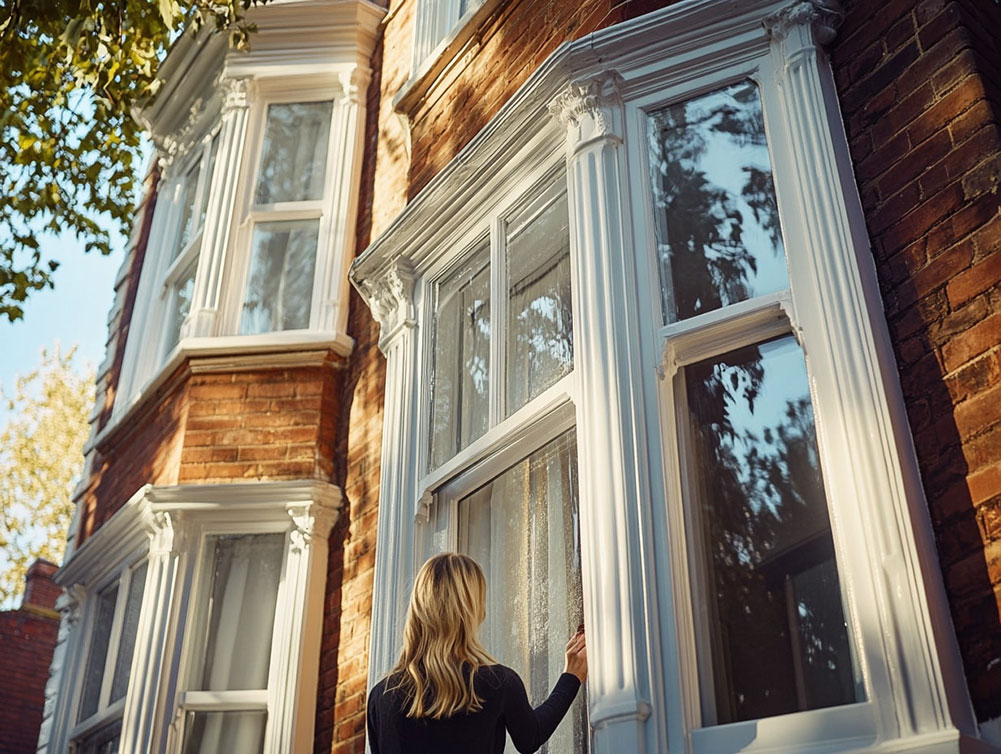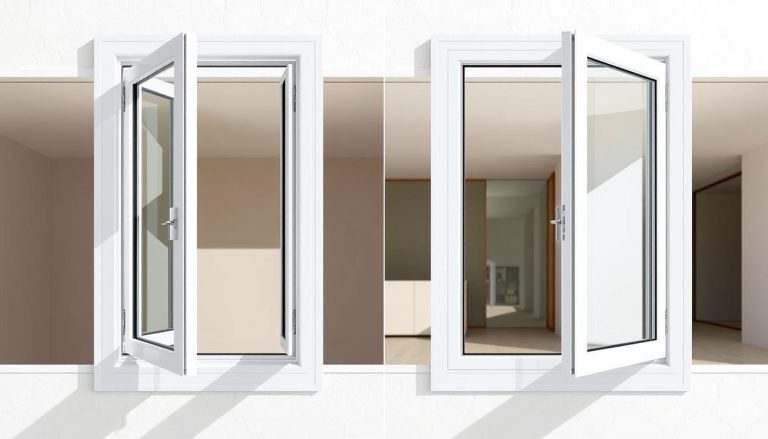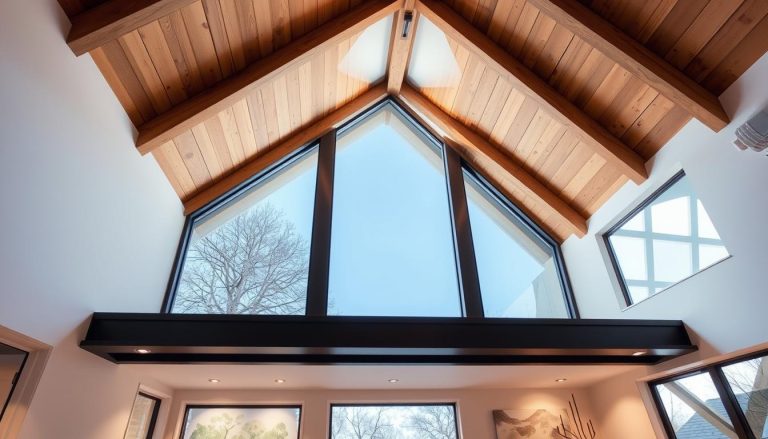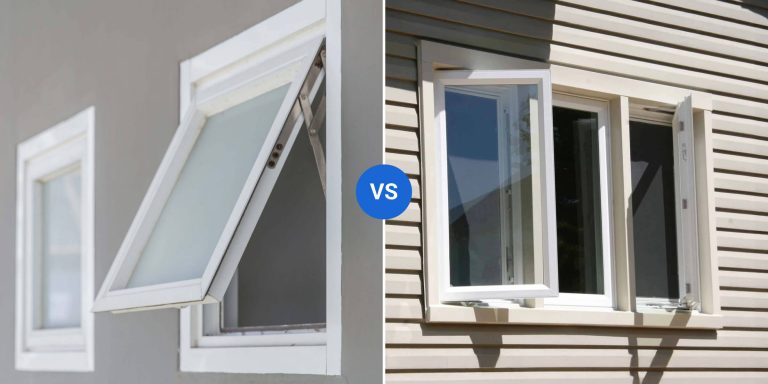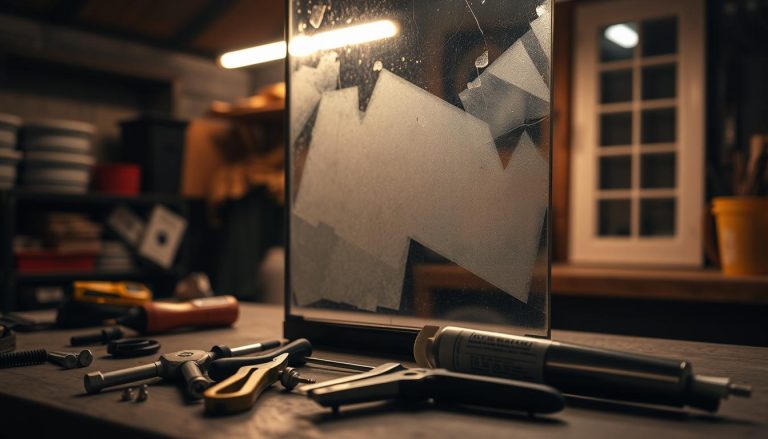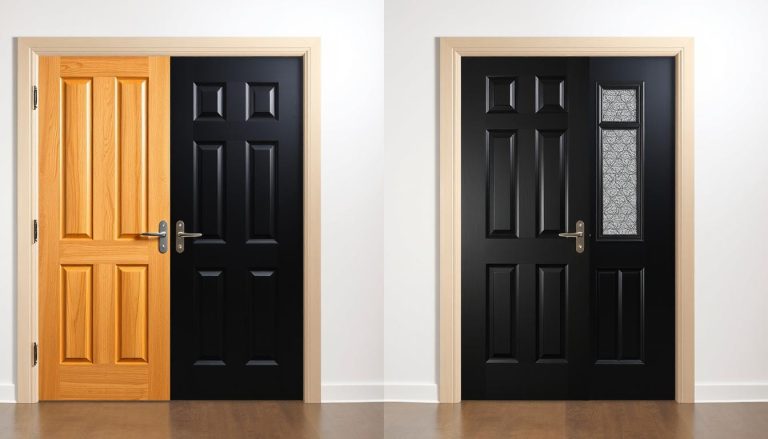Window Replacement Near Me
Key Takeaways:
- Bay windows typically have three panels, while bow windows have four or more.
- Both window styles add space, light, and architectural interest to homes.
- Bay windows often create more interior space, while bow windows offer a smoother exterior appearance.
- When considering bay vs bow window, installation requirements and costs differ significantly.
- Energy efficiency and maintenance are crucial factors to consider when choosing between these window styles.
Hello there! I’m Cherry Jian, a Sales Consultant at Total Home Windows and Doors. Today, I’m excited to share my expertise on a topic that’s close to my heart: the comparison between bow windows and bay windows. As a trusted windows and doors manufacturer in the Greater Toronto Area, we’ve installed countless bay and bow windows, and I’m here to help you understand the key differences and make the best choice for your home.
Find related services
Introduction
When it comes to enhancing your home’s aesthetics and functionality, few elements can make as significant an impact as bay and bow windows. These elegant window styles not only flood your living space with natural light but also create an illusion of more space and add a touch of architectural flair to both the interior and exterior of your home.
As our Vice President of Sales, Vitaly Shapiro, often says:
Choosing between a bay window and a bow window is more than just a matter of preference. It's about understanding how each style can complement your home's architecture and meet your specific needs.
Let’s dive into the world of these beautiful window styles and explore what makes each unique.
Find related products
Understanding Bay Windows
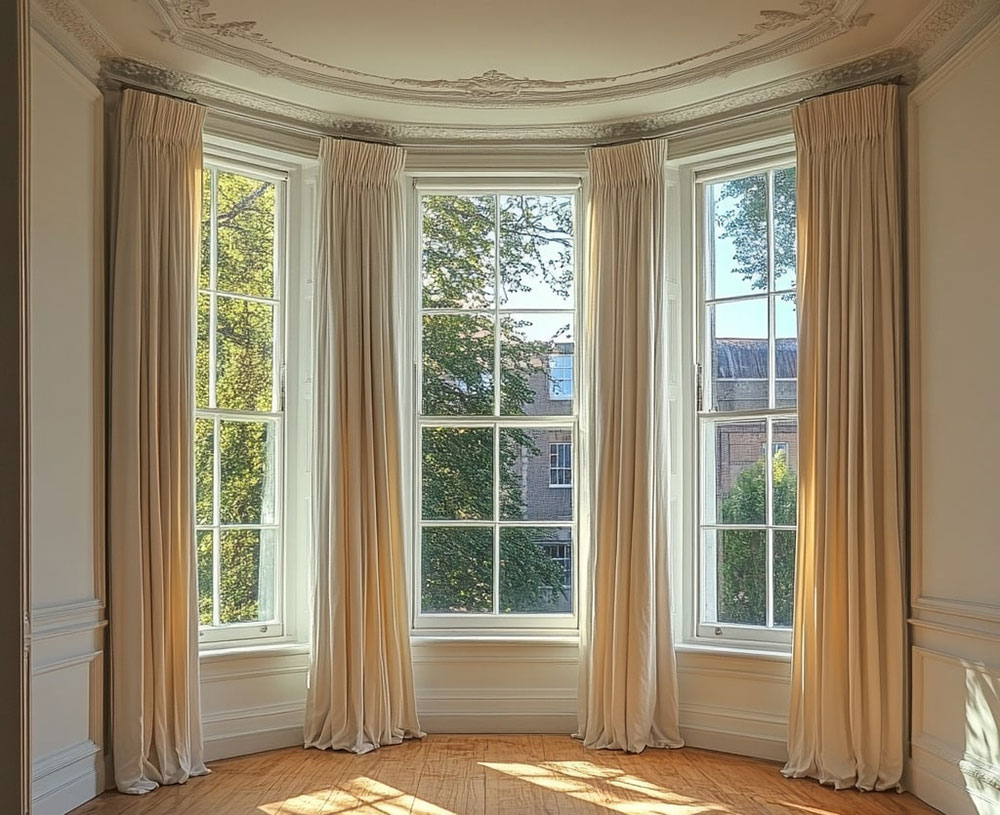
Definition and Basic Structure
Bay windows are a classic choice that has been gracing homes for centuries. They typically consist of three windows arranged in an angled projection that extends outward from the wall of the house. The center window is usually larger and fixed, flanked by two smaller windows on either side.
Types of Bay Windows
- Box Bay Windows: These bay window types have a rectangular shape and are often seen in modern homes.
- Full Bay Windows: These bay window types extend from floor to ceiling, creating a dramatic effect.
- Oriel Bay Windows: Supported by brackets or corbels, these bay window types don’t extend to the ground.
- Circle Bay Windows: These bay window types create a rounded appearance and are often found in Victorian-style homes.
Components of a Bay Window
- Center Window: Usually a large picture window that offers an unobstructed view.
- Side Windows: Often casement or double-hung windows that can be opened for ventilation.
Typical Configurations
Bay windows are commonly configured at 30-degree or 45-degree angles, though custom angles are possible.
Understanding Bow Windows
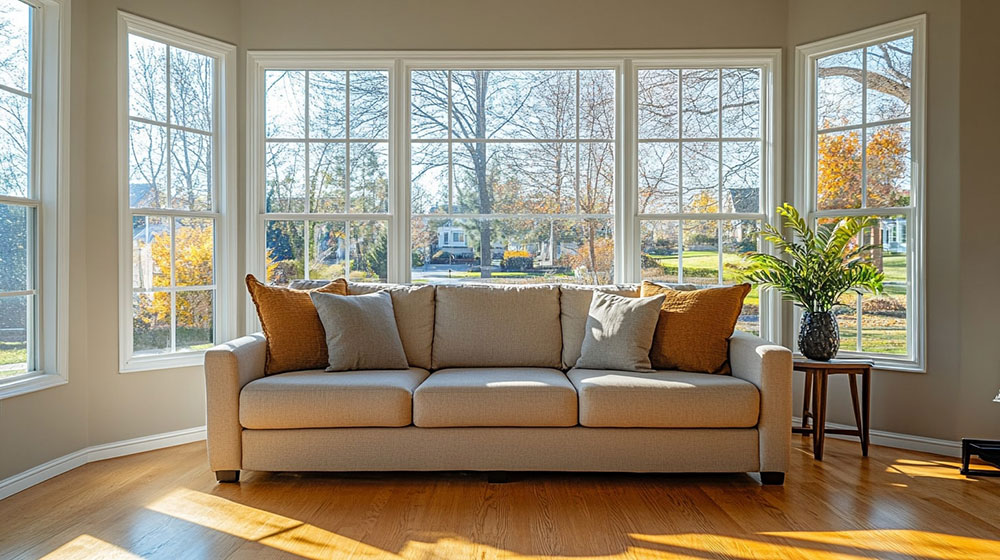
Definition and Basic Structure
Bow windows, also known as compass windows, create a graceful curved appearance. They consist of four or more window panels arranged in a gentle arc.
Typical Configurations
- Four-lite Bow: The most compact bow window configuration.
- Five-lite Bow: A popular choice that balances aesthetics and practicality.
- Six-lite Bow: Offers the most dramatic curved effect.
Components of a Bow Window
Unlike bay windows, bow windows typically feature equal-sized window panels. These can be a combination of fixed and operable windows, depending on your preference.
Key Differences Between Bay and Bow Windows
To help visualize the differences, let’s look at this comparison table:As our Project Manager, Eugene Siukayev, notes:
Feature |
Bay Windows |
Bow Windows |
Shape |
Angular |
Curved |
Number of Panels |
Typically 3 |
4 or more |
Projection |
More pronounced |
More subtle |
Interior Space |
Creates more usable space |
Creates a curved nook |
Light Distribution |
Focused |
More even |
Typical Styles |
Traditional, modern |
Victorian, contemporary |
As our Project Manager, Eugene Siukayev, notes:
The choice between bay window vs bow window often comes down to the architectural style of the home and the homeowner’s personal preferences. Bay windows tend to create more interior space, while bow windows offer a smoother exterior appearance.
When considering bay window vs bow, both types provide scenic views and additional storage space, appealing to homeowners looking to create cozy nooks for activities like reading or crafting.”
Appearance and Design
When it comes to appearance and design, both bay and bow windows offer unique characteristics that can enhance the aesthetic appeal of your home. Here are some key differences and similarities:
- Bay Windows: Bay windows are known for their angular projection, typically consisting of three windows: a large central picture window flanked by two smaller, operable windows. This configuration emphasizes a panoramic view, making the central window the focal point. Bay windows can range from 40 inches to 6 feet wide and project outward by 1 to 4 feet, creating a striking architectural feature.
- Bow Windows: Bow windows, in contrast, offer a softer, more graceful appearance with their curved, semi-circular projection. They feature four or more windows of the same size, creating a gentle arc. Bow windows are often referred to by the number of windows, such as a four-lite bow, a five-lite bow, or a six-lite bow. Typically, bow windows range from 4 to 12 feet wide and project outward by 1 to 4 feet, adding a touch of elegance to any home.
- Customization Options: Both bay and bow windows offer a variety of customization options to fit different architectural styles and design preferences. Bay windows can be installed in various rooms throughout your home, each time providing a unique benefit. Similarly, bow windows create inviting spaces, enhancing the overall ambiance of your home.
- Window Styles: Bay and bow windows can be paired with different window styles, such as casement windows, to enhance their functionality and aesthetic appeal. Casement windows are a popular choice for both bay and bow windows due to their excellent ventilation and energy efficiency.
- Interior Space: Both bay and bow windows can create a cozy interior space, perfect for a window seat or a reading nook. The interior space within a bay window is often ideal for a dining nook or window seat, while bow windows can fill a larger interior space more effectively than bay windows.
- Exterior Wall: When installing a bay or bow window, it’s essential to consider the exterior wall and the surrounding architecture. Bay windows may not be the best choice close to a street or sidewalk due to their larger profile, while bow windows have a narrower profile, making them a better choice when space is limited.
In summary, both bay and bow windows offer unique appearance and design characteristics that can enhance the aesthetic appeal of your home. While bay windows are characterized by their angular projection, bow windows take a softer approach with a curved, semi-circular projection. Both window types offer customization options, can be paired with different window styles, and can create a cozy interior space.
Pros and cons of Bay Windows
Bay windows offer numerous benefits to homeowners. Let’s break them down into a clear list of pros and cons:
Pros of Bay Windows:
Creates a Focal Point: Bay windows naturally draw the eye, becoming a standout feature in any room.
Wide View: The large center window offers an expansive view of the outdoors.
Ample Natural Light: The angled design allows light to enter from multiple directions.
Built-in Seating: The extended space often accommodates a cozy window seat or reading nook.
Increased Curb Appeal: Bay windows add character and value to your home’s exterior.
Versatility: Suitable for various room types, from living rooms to bedrooms.
More Interior Space: The projecting design adds extra square footage to your room.
Ventilation Options: Side windows can often be opened for improved air circulation.
Customizable: Can be tailored to match various architectural styles.
Energy Efficient: When properly installed, can help improve your home’s energy performance.
Cons of Bay Windows:
Complex Installation: Requires more structural support than standard windows.
Higher Cost: Generally more expensive than regular windows due to size and complexity.
Potential for Heat Loss: More seams and joints can lead to heat loss if not properly insulated.
Maintenance: More surfaces to clean and maintain compared to a single flat window.
Limited Wall Space: Takes up more wall space, which might be an issue in smaller rooms.
Overheating Risk: Large glass areas can lead to overheating in summer if not properly treated.
Roof Considerations: May require changes to your home’s roof structure.
Not Suitable for All Homes: Some house designs or wall structures may not accommodate bay windows.
As our Project Manager, Eugene Siukayev, often points out:
While bay windows offer many advantages, it's crucial to consider your specific home layout and needs. The extra space and light can be transformative, but proper installation is key to avoiding potential drawbacks.
Pros and Cons of Bow Windows
Now, let’s examine the pros and cons of bow windows:
Pros of Bow Windows:
Smooth, Curved Appearance: A bow or bay window creates a softer, more rounded look.
Panoramic Views: The multiple panels offer a wider field of view.
Abundant Natural Light: The curved design allows light to enter from various angles.
Architectural Interest: Adds a unique element to both interior and exterior design.
Suitable for Larger Spaces: Ideal for wide walls where a bay window might look disproportionate.
Wraparound Potential: Can be installed around corners for a truly dramatic effect.
Versatile Design: Can incorporate different window types (fixed, double-hung, casement) in one unit.
Increased Home Value: Like bay windows, bow windows can boost your property’s market value.
Illusion of More Space: The outward curve can make rooms feel larger.
Symmetrical Appearance: Offers a balanced look that some homeowners prefer over bay windows.
Cons of Bow Windows:
Higher Cost: Generally more expensive than bay windows due to more glass panels.
Complex Installation: Requires skilled installation to ensure proper support and sealing.
Less Protrusion: Typically doesn’t extend as far out as bay windows, creating less additional floor space.
Energy Efficiency Challenges: More seams can potentially lead to more air leakage if not properly installed.
Limited Opening Options: Often, only the end panels can be opened for ventilation.
Maintenance Intensive: More glass panels mean more cleaning and maintenance.
Not Ideal for Small Spaces: Requires a significant amount of wall space, which may not suit smaller rooms.
Potential for Water Damage: The curved structure can be more prone to water collection if not properly designed.
Furniture Placement Limitations: The curved design may make it challenging to place furniture near the window.
Less Suitable for Modern Homes: The Victorian-inspired design may clash with very modern architectural styles.
Our Vice President of Sales, Vitaly Shapiro, often reminds customers:
Bow windows can create a stunning visual impact, but they're not a one-size-fits-all solution. It's important to consider your home's style, your space requirements, and your long-term maintenance commitment when choosing between bay and bow windows.
Considerations for Installation
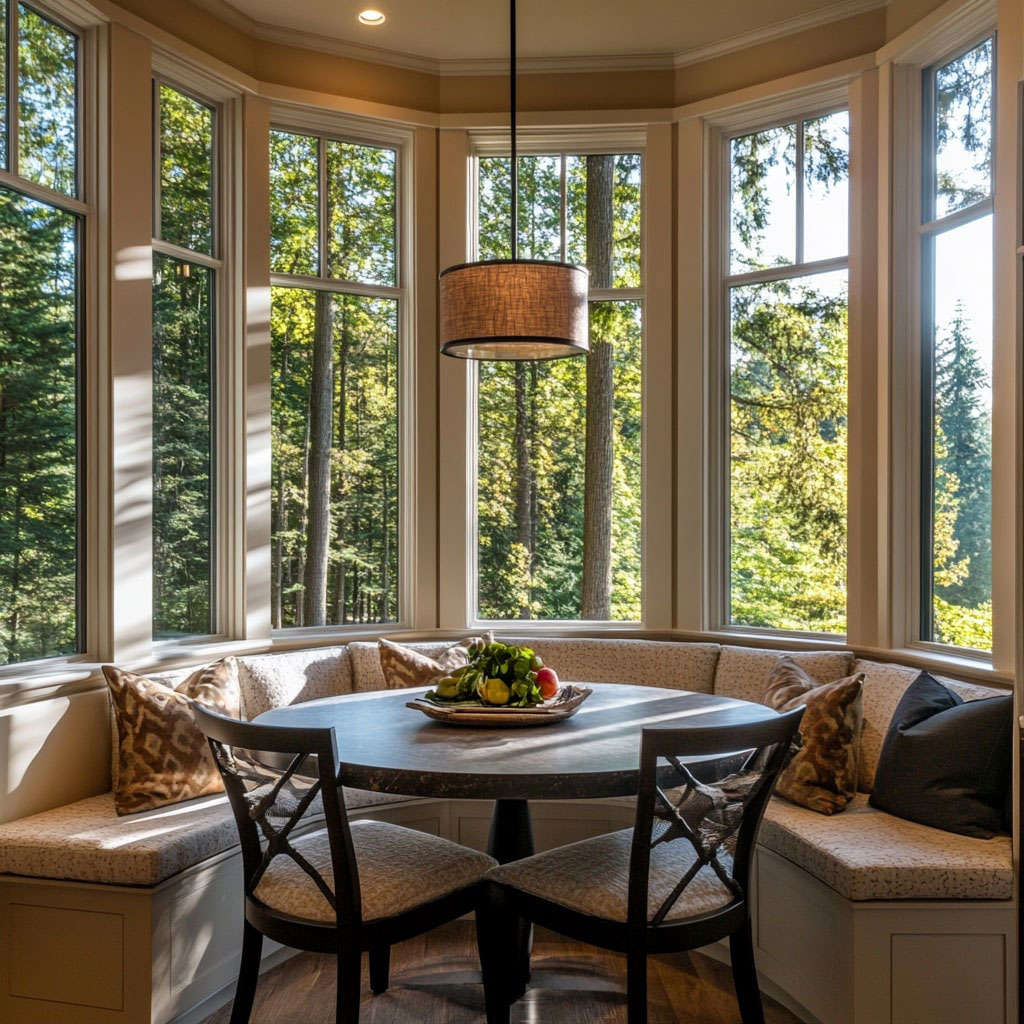
Bow windows can create a stunning visual impact, but they're not a one-size-fits-all solution. It's important to consider your home's style, your space requirements, and your long-term maintenance commitment when choosing between bay and bow windows.
Structural Requirements
Both bay and bow windows require proper support, but their needs differ slightly, often necessitating modifications to the existing window opening.
- Bay Window Installation:
- Requires a strong support system, often including a cable support system or knee braces.
- May need a new or extended roof structure.
- Bow Window Installation:
- Generally requires more horizontal space.
- Often needs additional structural support along its entire span.
Energy Efficiency Concerns
When it comes to energy efficiency, our Chief Operating Officer, Anna Klein, emphasizes:
Investing in energy-efficient windows is not just about reducing utility bills. It's about creating a comfortable living environment and contributing to a more sustainable future.
Both bay and bow windows can be energy-efficient when properly installed and made with high-quality materials. At Total Home Windows and Doors, we offer energy-efficient options for both styles, including double and triple-pane glass with Low-E coatings.
Cost Comparison
The cost of bay and bow windows can vary significantly based on size, materials, and complexity of installation. Generally, bow windows tend to be more expensive due to their more complex structure and the need for more window panels.
Here’s a rough comparison:
Window Type |
Average Cost Range (CAD) |
Installation Complexity |
Bay Window |
$2,500 – $7,000 |
Moderate |
Bow Window |
$3,500 – $9,000 |
High |
Note: These are approximate ranges. Actual costs may vary based on specific requirements and location.
Maintenance and Cleaning
Both window styles require regular maintenance to ensure longevity and optimal performance. However, bow windows may require more attention due to their larger number of panes and seams.
Choosing Between Bay and Bow Windows
Selecting the right window style for your home involves several factors:
- Assess Your Space: Consider the width of your wall and the projection you desire.
- Consider Your Home’s Style: Bay windows often suit traditional homes, while bow windows complement Victorian or contemporary styles.
- Evaluate Light and Ventilation Needs: Both styles offer ample light, but bay windows might provide more ventilation options.
- Think About Energy Efficiency: Consider the energy efficiency benefits of different window options.
- Budget Considerations: Factor in both initial costs and long-term energy savings.
Our Project Manager, Alexandr Naumov, advises:
“Don’t just think about the immediate aesthetic impact. Consider how the window will function in your space over time, how it will affect your home’s energy performance, and how it aligns with your long-term home improvement plans.”
Customization Options
At Total Home Windows and Doors, we offer a wide range of customization options for both bay and bow windows:
- Window Materials: Choose from vinyl or aluminium frames.
- Glass Options: Select from double-pane, triple-pane, or specialized Low-E coatings for enhanced energy efficiency.
- Custom colours: Choose from a great variety of wood grain or custom colours
Bay and Bow Windows in Canadian Homes
Living in Canada means dealing with diverse and often harsh weather conditions. Both bay and bow windows can be excellent choices for Canadian homes when properly installed and maintained.
- Suitability for Canadian Climate: Both styles can be designed to withstand Canadian weather extremes.
- Energy Efficiency: Look for ENERGY STAR certified windows to ensure optimal performance in cold winters.
- Enhancing Views: Take advantage of Canada’s beautiful landscapes with these expansive window styles.
- Increasing Property Value: Both styles can significantly boost your home’s curb appeal and market value.
Maintenance and Care
To ensure your bay or bow windows continue to perform optimally, follow these maintenance tips:
- Regular Cleaning: Clean both interior and exterior surfaces at least twice a year.
- Check for Drafts: Regularly inspect for any air leaks and address them promptly.
- Inspect for Water Damage: Look for signs of water infiltration, especially after heavy rains.
- Lubricate Moving Parts: For operable windows, lubricate hinges and locks annually.
Daniel Klein, one of our experienced Project Managers, emphasizes:
Proper maintenance is key to extending the life of your windows and ensuring they continue to enhance your home's comfort and energy efficiency. Don't wait for problems to arise – regular checks can prevent most issues.
Working with Total Home Windows and Doors
At Total Home Windows and Doors, we pride ourselves on providing top-quality windows and exceptional service. When you choose to work with us, you can expect:
- Expert Consultation: Our team will help you choose the perfect windows for your home.
- Custom Design Options: We offer a wide range of customization choices to match your vision.
- Professional Installation: Our skilled technicians ensure proper installation for optimal performance.
- Warranty and Support: We stand behind our products with comprehensive warranties and ongoing support.
Conclusion
Choosing between bay and bow windows is a significant decision that can dramatically impact your home’s appearance and functionality. Both styles offer unique advantages, and the right choice depends on your specific needs, preferences, and home architecture.
Remember, whether you opt for the angular elegance of a bay window or the gentle curve of a bow window, quality materials and proper installation are key to enjoying these beautiful features for years to come.
If you’re considering window replacement in the Greater Toronto Area, don’t hesitate to reach out to us at Total Home Windows and Doors. We’re here to help you make the best choice for your home and ensure a smooth, hassle-free installation process.
FAQs
Can I replace a flat window with a bay or bow window?
Yes, in most cases. However, it requires careful planning and may need structural modifications. Our team can assess your specific situation and provide expert advice.
How do bay and bow windows affect energy efficiency?
When properly installed and made with energy-efficient materials, both styles can contribute to better energy performance. They can provide excellent insulation and reduce heat loss.
Are bay or bow windows suitable for all rooms?
While they can work in many rooms, they’re most commonly used in living rooms, dining rooms, and master bedrooms. The suitability depends on the room’s size, layout, and your specific needs.
What's the average lifespan of bay and bow windows?
With proper maintenance, high-quality bay and bow windows can last 20-25 years or more. The exact lifespan depends on materials, installation quality, and care.
Can I install a bay or bow window on an upper floor?
Yes, it’s possible to install these windows on upper floors. However, it requires careful planning and may need additional structural support. Always consult with a professional for such installations.
Remember, every home is unique, and what works for one might not be the best for another. That’s why we at Total Home Windows and Doors offer personalized consultations to help you make the best decision for your home.

